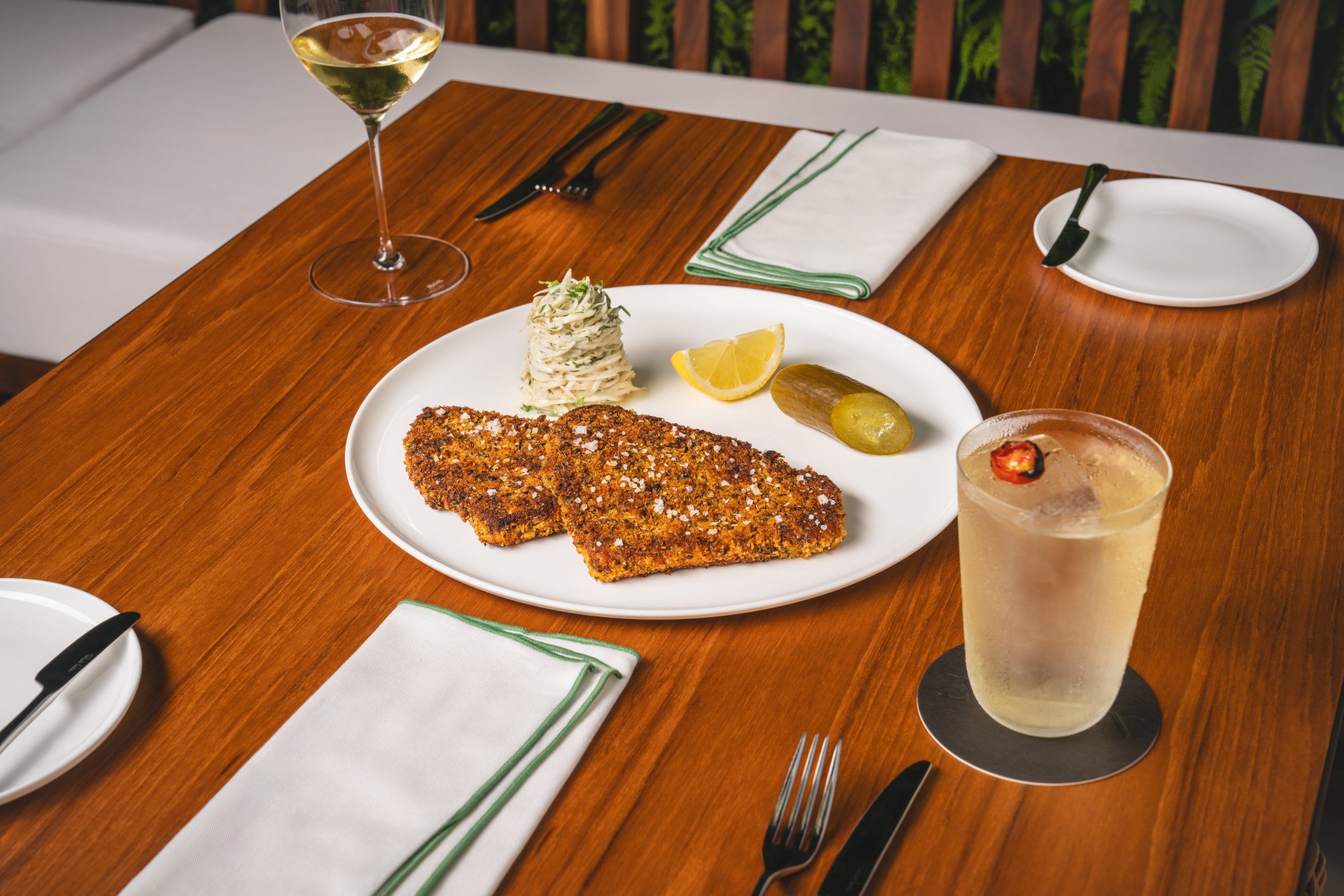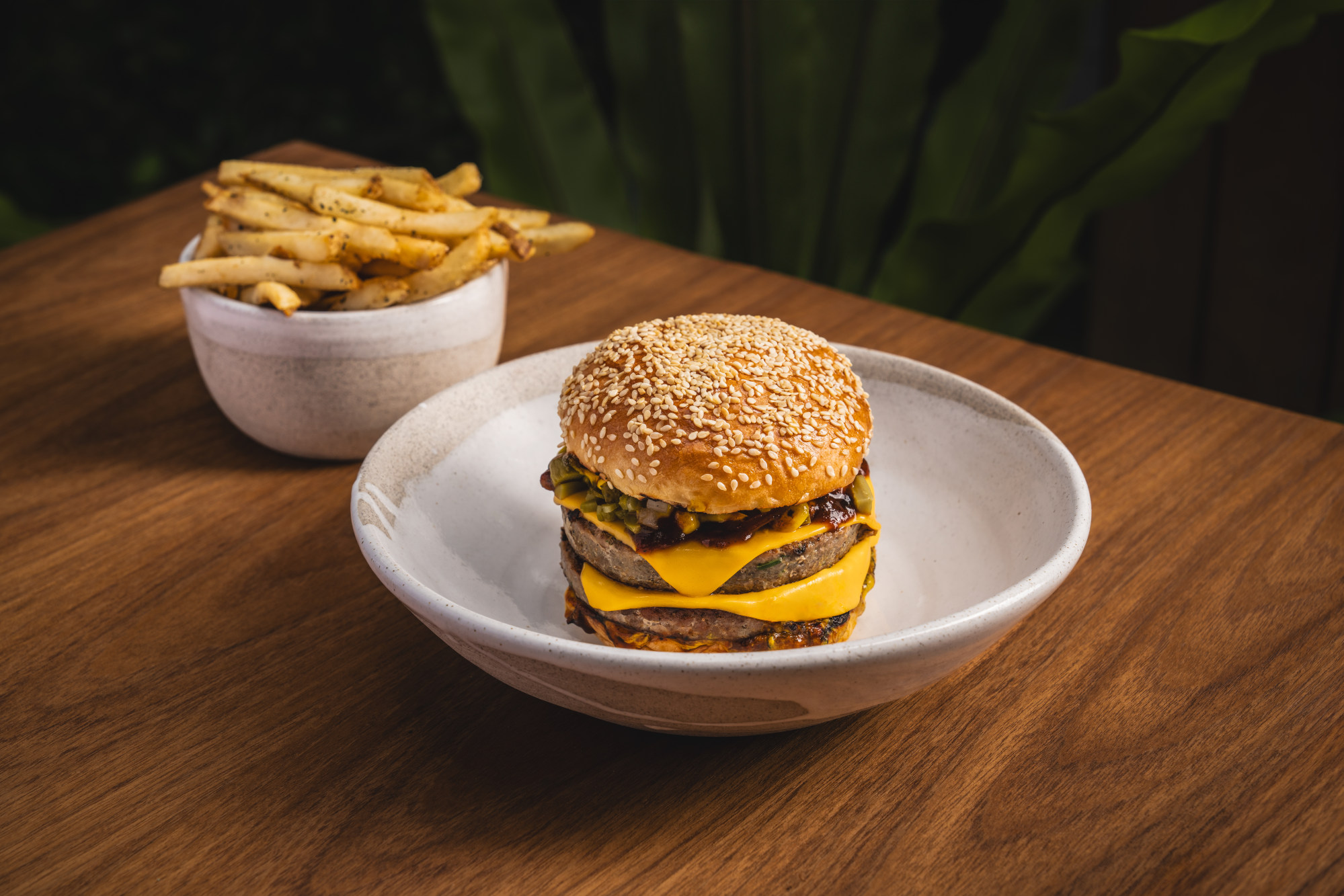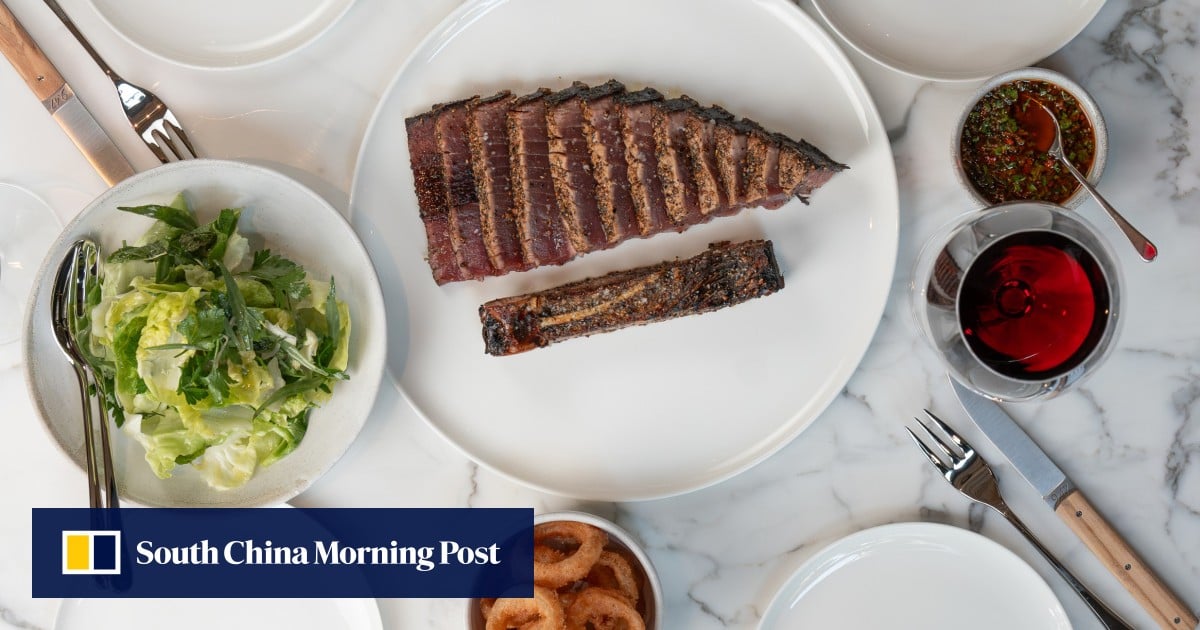“I forgot to wrap my fish that was sitting in the fridge with a fan in it. The next day, the skin was incredibly dry and I got in a lot of trouble,” Niland says. “I cooked the fish that night and the skin puffed off the flesh. You end up with this beautiful crunchy crackling on top.”
From there, a new era of fish cooking was born, with Niland experimenting with fresh ways of serving the ingredient.
Today, the 35-year-old chef has five establishments in Sydney that he operates with his wife, Julie, their restaurant group’s chief executive: two sit-down restaurants, Saint Peter and Peterman; a high-end fish and chip shop, Charcoal Fish; as well as two fish butcheries.
Why local produce is ‘a must’ at Mauro Colagreco’s new Hong Kong restaurant
Why local produce is ‘a must’ at Mauro Colagreco’s new Hong Kong restaurant
In November 2023 he opened Fysh, a seafood steakhouse concept, as his first restaurant outside Australia, in Singapore’s new Edition hotel.
Inspired by some of the best steakhouses in the world, such as Sydney’s Rockpool Bar and Grill and New York’s Peter Luger Steak House, Niland had been looking for an opportunity to open a fish steakhouse for four-and-a-half years.
Instead of beef steaks and lamb racks, Singapore diners will get to try dishes such as “sirloin” on the bone of swordfish, “rib-eye” of tuna and even tuna “Chateaubriand”.
With Fysh, Niland is trying “to interpret fish more as meat to [appeal to] people in the room that don’t necessarily love fish, or feel that fish satiate them enough”, he says.


The menu will feature fish prepared using techniques such as dry ageing, and fish charcuterie, traditionally associated with red meats.
For Niland, finding new ways to serve fish has been creatively exciting. “For so long fish has been synonymous with a slightly more feminine meal that won’t fill you up.
“It’s not overly savoury in taste, it’s more aligned to acidity, buttery sauces and lemons, whereas for me, it’s about developing all of these savoury flavours within fish that are more aligned with a meaty characteristic.”
Too often, if there’s fish on the menu, you only interact with a fish fillet – that’s it
However, opening a restaurant in a brand-new market has proven to be a challenge for Niland, who has been working hard to understand the Singaporean palate.
During the month following Fysh’s opening, Niland changed 90 per cent of its menu to better suit the market.
“There’s an appreciation for subtleties and a palate that doesn’t like to be overwhelmed by extremes of any particular taste [in Singapore],” he says.

“So whether it’s too much salt or too much acid or too much sugar, I feel like there’s a bit of friction there. There’s more respect towards finding a certain level of balance and harmony when working with flavours, especially when you’re working with seafood.
“I feel like both markets, Sydney and Singapore, are well travelled. Singapore, in particular, just because it’s more connected to [places such as] Hong Kong, Japan, South Korea, or India. It’s a stone’s throw from so many unique places within the world that carry such a unique food identity,” he says.
A constant at Fysh, as at all Niland’s restaurants, is his deep-rooted belief in minimising wastage when cooking fish and using every part of the animal in the most creative way possible.

This started when he opened his first restaurant, Saint Peter, in 2016.
As the sole director of the business, Niland was driven by the fear of failure. “My creativity and innovation were born out of having a problem. My name is on the lease and I’ve got four kids,” Niland says.
“I spent A$5,000 on my first fish invoice at Saint Peter. And from what I was taught at college, A$2,500 of that fish was going in the bin because that’s what we were taught was the yield of a fish: 50 per cent,” he says.

With Saint Peter, Niland not only rejected what he’d been taught at college, but also created something the world had never seen before. But rather than settle for being called a pioneer, he is much more interested in furthering chefs’ and the general public’s perception of fish and educating them on the possibilities seafood holds.
“Nothing’s a secret. Nothing matters until you share it. There’s no point hanging onto [knowledge] – you’ve got to share it for it to matter,” Niland says.
Should a ‘sustainable’ restaurant fly food and chefs around the world?
Should a ‘sustainable’ restaurant fly food and chefs around the world?
Niland’s efforts aren’t going to waste.
His first cookbook, The Whole Fish, was published in 2019 and offers new ways to cook, eat and think about fish. The book won two James Beard awards in 2020 and was the winner of the 2019 André Simon Food Award. Since then, he has published two more cookbooks, Take One Fish and Fish Butchery.
“It’s not about me. I’m just trying to implement a strategy of working with a whole fish that doesn’t amount to half of it ending up in the bin, which is usually what happens in high-end dining and just restaurants period,” Niland says.

“Too often, if there’s fish on the menu, you only interact with a fish fillet – that’s it.”
However, sustainability comes at a price. Using the whole fish requires manpower, preparation, storage and education – all of which translates to extra business costs.
In an age when suppliers offer pre-prepared fish cuts at low rates, this option is a no-brainer for most restaurants.
Famous noodles, ‘fantastic’ pizza: Australian chef’s go-to Hong Kong eats
Famous noodles, ‘fantastic’ pizza: Australian chef’s go-to Hong Kong eats
“The resistance towards wanting to work more holistically by most of the industry at large is the wrestle between the economics and ethics of a fish,” Niland says. “There is no desire to put more bodies processing fish because it will outweigh the cost of what you would get as a return for the sundries of a fish.”
Niland now runs six food businesses, but he never set out to open this many. Rather, they were necessary steps for him to show the public the untapped potential whole fish has to offer.
“The perception of fish should lie with the consumer; it lies squarely with the industry right now. And until the industry changes, the consumer can’t change their habits,” he says.
He adds: “Sustainability is more about intentionality than anything. It’s really about making a decision that you’re deciding to choose craftsmanship over convenience.”







